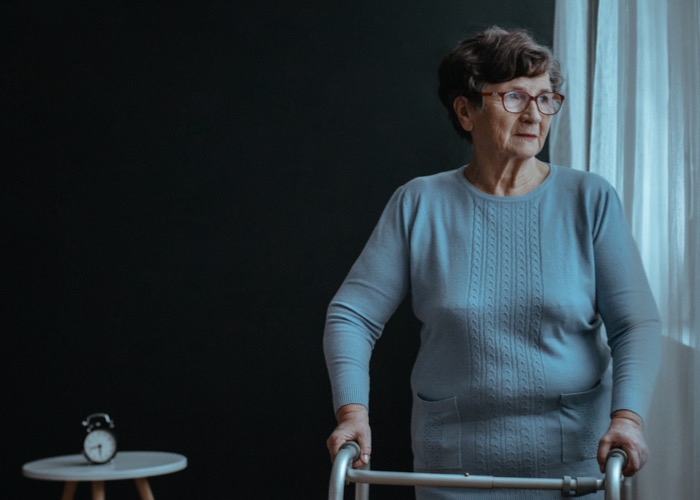Senior moments
In OTC
Follow this topic
Bookmark
Record learning outcomes

Last month, The Health of the Nation: A Strategy for Healthier Longer Lives published by the All Party Parliamentary Group for Longevity revealed that the number of major illnesses suffered by older people will increase by 85 per cent between 2015 and 2035. It also found that older people in the poorest areas have 35 per cent more spent on them by the NHS than older people in the richest areas.
Research also highlights the impact that geographical location can have on the lives of older people. In October 2019, the Resolution Foundation’s report Ageing, Fast and Slow revealed that people living in coastal and rural areas are generally much older than those living in urban areas. The PHE report in August 2019 found that the population aged 65-plus will grow by about 50 per cent in rural areas by 2039, and those in rural or coastal areas may be at higher risk of loneliness and social exclusion. Evidence suggests that promoting the role of community pharmacists, particularly for medicines reviews, in these areas may have a positive impact on access to health services.
Mobility is the main way to slow frailty
According to Age UK’s briefing Health and Care of Older People in England 2019, published in July 2019, frailty affects 6.5 per cent of people aged 60 to 69, rising to 65 per cent of those aged over 90. The briefing reports that between 2017 and 2040, the population of people aged over 65 is projected to increase by 49 per cent. The number of people aged over 85 – the group most likely to need health and care services – is projected to rise even more rapidly, nearly doubling from 1.4 to 2.7 million over the same period.
Dr Jennifer Stevenson, clinical academic pharmacist in the Clinical Pharmacy and Medicines Use Group at King’s College London, says that increasing exercise and improving mobility are the main ways to slow down frailty. “It is important also to look at sleeping patterns, hearing, sight and dental hygiene, which can all affect day-to-day activities,” she says. “These can often be picked up by the community pharmacy. Social isolation is another huge factor in ageing. Loneliness is shown to be comparable to other risk factors for poor health, such as smoking.”
The number of people aged over 85 – the group most likely to need health and care services – is projected to rise even more rapidly
In January 2020, an analysis in The Pharmaceutical Journal revealed that patients with frailty are often more susceptible to the side effects of medicines and may experience falls, incontinence, delirium and immobility. The analysis revealed that older people with frailty are not getting the basic care they need to prevent adverse drug reactions and unplanned hospital admissions.
In December 2019, NHS England and NHS Improvement launched a consultation on five draft service specifications that form part of the Network Contract Direct Enhanced Service (DES). Three are particularly relevant for the care of older people: structured medication reviews, enhanced health in care homes and anticipatory care.
In its response to the draft, the British Geriatrics Society said that structured medication reviews will help reduce problematic polypharmacy, which is common among older people. However, the specification could be more “impactful and patient-focused by targeting specific medications that are associated with harm in older people with frailty”. It also stated that in people with severe frailty, the pros and cons of disease-prevention medicines, such as those for reducing blood pressure and cholesterol, should be reviewed. These medicines “may have been appropriate when prescribed, but are no longer appropriate for some people as they become increasingly frail”.
Dr Stevenson says medication-related harm is influenced by various factors, change being the most important. “This may be an acute illness, even a relatively minor one such as a cough or cold,” she says. “Or it may be after a hospital admission and the challenges of transfer of care. Without adequate follow-up, this can lead older people to become increasingly vulnerable. Any change in care package can be a trigger as well. Community pharmacists often know regular older customers and may become aware of any change in their circumstances.”
Time for a considered approach to medicines
In an August 2019 report, More Harm Than Good, Age UK called for a more considered approach to prescribing medicines for the older population. According to the charity, nearly two million older people are on seven or more prescription medicines that carry a risk of side effects that are severe in some cases and occasionally life threatening. In addition, it says that prescribing more drugs isn’t always the best option, particularly when it comes to older people.
“Getting medicines right for older people who live in care homes is especially challenging,” says Caroline Abrahams, charity director at Age UK, “but also more crucial because many residents are coping with multiple health problems, frailty and dementia. This means they are especially likely to be on multiple treatments that in turn increase the risk of adverse reactions. The NHS Long Term Plan published earlier this year commits to rolling out enhanced healthcare in every care home in the country over the next few years, including regular medicine reviews for residents and more active support for care home staff from pharmacists and GPs.”
Getting medicines right for older people who live in care homes is especially challenging
A report by RPS Scotland in April 2019, Putting Residents At The Centre Of Pharmacy Care Home Services, called for pharmacists to lead on the provision of pharmaceutical care in care homes, including regular medication reviews as part of the multidisciplinary team. Dr Stevenson suggests a multi-disciplinary approach to tackling medication-related harm at home and in care homes. “Carers, including allied professionals such as physiotherapists and occupational therapists, all need to understand how significant an impact medicines can have on an older person,” she says. “If someone can’t do rehab because they feel dizzy, could it be a side effect of their medicines? When checking their dexterity for making a cup of tea, think about whether they could open a packet of medicines. Community pharmacists should be the first port of call to see if anything can be done.”
Tackling social isolation
 Age UK’s 2019 briefing also revealed that nearly a third of people aged 65 and over live alone and 1.4 million describe themselves as “often or always lonely”. The Ageing Better programme was set up by The National Lottery Community Fund with the aim of helping to combat social isolation and loneliness in people over 50. Running until 2021, it is delivered by 14 cross-sector partnerships across England. The first evaluation report in January 2020 revealed that 50 per cent of those surveyed felt less lonely after taking part than they did before and 51 per cent were less socially isolated.
Age UK’s 2019 briefing also revealed that nearly a third of people aged 65 and over live alone and 1.4 million describe themselves as “often or always lonely”. The Ageing Better programme was set up by The National Lottery Community Fund with the aim of helping to combat social isolation and loneliness in people over 50. Running until 2021, it is delivered by 14 cross-sector partnerships across England. The first evaluation report in January 2020 revealed that 50 per cent of those surveyed felt less lonely after taking part than they did before and 51 per cent were less socially isolated.
The charity Mind says social isolation and loneliness can have a significant impact on mental health. In January 2020, Oxford Health and Age UK Oxfordshire launched a campaign to get the over-65s to start conversations about mental health and access psychological therapies such as the free, confidential NHS service TalkingSpace Plus. More than half of older people who experience mental health symptoms don’t seek help, believing they should just get on with it.
Social isolation and loneliness can have a significant impact on mental health
“Many older people may take the view that feeling low, anxious or depressed is a normal part of ageing,” says consultant psychologist Jo Ryder, clinical lead for TalkingSpace Plus. “It isn’t and should be seen like any physical illness that deserves the correct treatment, which includes talking therapies. There is also strong evidence that improving mental wellbeing can also improve physical wellbeing.”
Protein intake falls short
A Sheffield study, published in February 2020 in Geriatrics, revealed that more than half of older adults aren’t consuming enough protein to reach national recommendations, yet protein is particularly important for delaying frailty and maintaining muscle mass and function. Harriet Smith, a registered dietitian speaking for Aymes Nutrition, says that half of people who are frail are likely to be malnourished.
“Community pharmacists can help by encouraging a combination of good nutrition, such as adequate energy, protein, calcium and vitamin D intakes, and regular exercise, including resistance and balance exercises,” she says. “Look out for individuals at risk of malnutrition – low BMI, unintentional and significant weight loss in the past three to six months and those with acute illness with little or no nutritional intake for five or more days. This could be through awareness-raising initiatives, such as posters explaining the signs and symptoms of malnutrition – loss of appetite, low energy, loose-fitting jewellery. Pharmacies could collaborate with dietitians to offer nutrition risk screening for older patients, using the Malnutrition Universal Screening Tool.”
Nutritionist Frankie Brogan says that getting enough of the right nutrients, whether from dietary sources or via supplementation, can address some common age-related conditions. “It may pay dividends to link up with dietitians to provide in-pharmacy advice to older patients and explain how and why eating better can improve their health,” he says. “Our ability to produce important compounds for ourselves reduces as we get older. For example, as we age, we make less vitamin D from sunlight than we did when we were younger.”
Maintaining independence
The Joint Health Of The Nation Report 2019, published by The Primary Care Rheumatology and Musculoskeletal Medicine Society in February 2019, says the incidence of musculoskeletal conditions is set to affect three times more people than cancer by 2030. Studies show that self-management can play a significant role in improving the health and quality of life of people with arthritis.
Osteoarthritis is a growing condition that affects millions of people across the UK and impacts their everyday lives
According to GSK, the role of the pharmacy team in the management of joint pain continues to grow. GSK is helping pharmacy teams fully understand the condition and how to help patients through its jointpainpartners.gsk.com website.
“Osteoarthritis is a growing condition that affects millions of people across the UK and impacts their everyday lives,” says Dr Soha Dattani, director of scientific affairs consumer healthcare at GSK. “Community pharmacists are in a unique and trusted position to play a bigger role in front-line management, to support joint pain sufferers and help them live a fuller life. With Voltarol being the topical NSAID market leader in pharmacies, we are committed to supporting pharmacy staff to manage joint pain effectively.”
Elaine Walker, Deep Relief brand manager at Mentholatum, agrees that pharmacists and their staff can offer help and advice far beyond simply recommending pain relief products. “They can explain what joint pain sufferers are likely to experience, and educate them to play an active role in managing their condition,” she says. “Sufferers may be reluctant to exercise in case it makes their pain worse, but it is important to let them know that movement can actually help. Of course, people should be advised not to push themselves too hard and if they are planning to start moving after a period of inactivity, it is wise to check with their GP before starting.”
Dr Stevenson says it is important to think about what older people can do, not just what they can’t. “It is never too late to take action to remain healthier for longer,” she says. “If someone is over 70 and still smoking, for example, it is not too late to stop. Pharmacists can also help customers connect with local groups and community services to reduce social isolation and show them how to keep well and continue doing what they enjoy.”
Views from the P3pharmacy category panel
 Lila Thakerar, Shaftesbury Pharmacy, Harrow
Lila Thakerar, Shaftesbury Pharmacy, Harrow
“The demand for mobility aids has gone down in recent years, thanks to online competition, which can offer them cheaper than we can. People tend to come to us to get advice and try out the aid, but then go and buy it online, so we don’t keep many in stock now. Customers will come in about aches and pains, asking for NSAIDs in topical and oral form. Vitamin D supplements are also popular. Customers are given the starter dose by the GP then told to buy the maintenance dose from their pharmacy. Generic NSAIDs are good sellers among older customers, who tend to be more price conscious. We do sell lots of walking sticks and we have a prominent stand of these.”
 Lindsey Fairbrother, Goodlife Pharmacy, Hatton, Derbyshire
Lindsey Fairbrother, Goodlife Pharmacy, Hatton, Derbyshire
“The rise of online mobility aids greatly reduced our sales. We provide a wheelchair hire service, but there isn’t much call for it. We get lots of customers concerned about falls, either for themselves or an elderly relative, and that’s something we take seriously. If customers talk about dizziness or vertigo, that warrants a referral to their GP to try to prevent a fall. Nutrition is a real issue among elderly people who live alone. Often, they won’t bother to cook properly for themselves. Loneliness is a major issue, and if we can encourage them to get out and go to clubs, etc, they tend to eat better. I think pharmacy is a kind of unpaid social service for older people.”
 Gareth Evans, Wansford Pharmacy, Peterborough
Gareth Evans, Wansford Pharmacy, Peterborough
“We are in a small village and our older customers rely on us. Our delivery service is popular and we’re involved in the palliative care service. We don’t stock many mobility aids as space is an issue, but customers like to try these before they buy them. Tonics are popular and we sell a lot of ibuprofen gels and heat patches. We recommend patients try these topicals first, rather than resorting to large doses of oral painkillers, which can cause problems later on. GPs are encouraging patients to buy these OTC. Voltarol is one of our top sellers and vitamin D supplements are popular. We are seeing more elderly people interested in weight management and lifestyle.”
